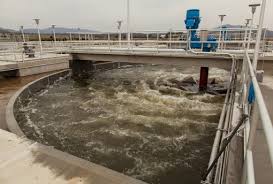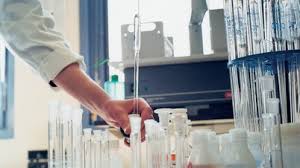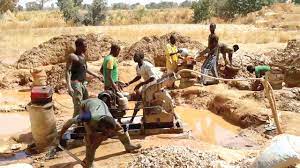Treatment for Drinking Water Production
Water treatment is any process that improves the quality of water to make it more acceptable for a specific end-use. The end use may be drinking, industrial water supply, irrigation, river flow maintenance, water recreation or many other uses, including being safely returned to the environment.
Water treatment removes contaminants and undesirable components, or reduces their concentration so that the water becomes fit for its desired end-use.
Early water treatment methods still used included sand filtration and chlorination. The first documented use of sand filters to purify the water supply dates to 1804, when the owner of a bleachery in Paisley, Scotland, John Gibb, installed an experimental filter, selling his unwanted surplus to the public.
This method was refined in the following two decades, and it culminated in the first treated public water supply in the world, installed by the Chelsea Waterworks Company in London in 1829.
Urban water management involves the planning, design, and operation of infrastructure needed to meet the demands for drinking water and sanitation, the control of infiltration and storm water runoff, and for recreational parks and the maintenance of urban ecosystems.
As urban areas grow, so do the demands for such services. In addition there is an increasing need to make urban water systems more resilient to climate change. All this leads to the realization that urban water management must be an integral part of urban planning in general.
Land use decisions impact water supply and wastewater system designs and operation, as well as measures needed for managing storm water runoff. A functioning urban infrastructure system also requires energy which in turn typically requires water.
Sustainable urban development must focus on the relationships between water, energy, and land use, and often on diversifying sources of water to assure reliable supplies. Integrated urban water management (IUWM) provides both a goal and a framework for planning, designing, and managing urban water systems.
It is a flexible process that responds to change and enables stakeholders to participate in, and predict the impacts of, development decisions. It includes the environmental, economic, social, technical, and political aspects of urban water management.
It enables better land use planning and the management of its impacts on fresh water supplies, treatment, and distribution; wastewater collection, treatment, reuse and disposal; storm water collection, use and disposal; and solid waste collection, recycling, and disposal systems.
It makes urban development part of integrated basin management oriented toward a more economically, socially, and environmentally sustainable mixed urban–rural landscape.
While recognizing the need for and the benefits derived from a systems approach to urban planning and development, including its water related components, this chapter will serve as an introduction to each of these components separately, and not all together as a system.
This understanding of each component is needed if indeed they eventually will be modelled, designed, and managed as part of the overall urban infrastructure system.
These urban water infrastructure components typically include water collection and storage facilities at source sites, water transport via aqueducts (canals, tunnels, and/or pipelines) from source sites to water treatment facilities; water treatment, storage, and distribution systems; wastewater collection (sewer) systems and treatment; and urban drainage works.
Treatmentfordrinkingwaterproduction
Treatment for drinking water production involves the removal of contaminants from raw water to produce water that is pure enough for human consumption without any short term or long term risk of any adverse health effect.
Substances that are removed during the process of drinking water treatment include suspended solids, bacteria, algae, viruses, fungi, and minerals such as iron and manganese.
Read Also : Efficiency and Maintenance of Waste-water Treatment Units
The processes involved in removing the contaminants include physical processes such as settling and filtration, chemical processes such as disinfection and coagulation and biological processes such as slow sand filtration.
Measures taken to ensure water quality not only relate to the treatment of the water, but to its conveyance and distribution after treatment. It is therefore common practice to keep residual disinfectants in the treated water to kill bacteriological contamination during distribution.
World Health Organization (WHO) guidelines are a general set of standards intended to apply where better local standards are not implemented. More rigorous standards apply across Europe, the USA and in most other developed countries. Followed throughout the world for drinking water quality requirements.
Processes


A combination selected from the following processes is used for municipal drinking water treatment worldwide:
- Pre-chlorination for algae control and arresting biological growth
- Aeration along with pre-chlorination for removal of dissolved iron when present with small amounts relatively of manganese
- Coagulation for flocculation or slow-sand filtration
- Coagulant aids, also known as polyelectrolytes – to improve coagulation and for more robust floc formation
- Sedimentation for solids separation that is the removal of suspended solids trapped in the floc
- Filtration to remove particles from water either by passage through a sand bed that can be washed and reused or by passage through a purpose designed filter that may be washable.
- Disinfection for killing bacteria viruses and other pathogens.
Technologies for potable water and other uses are well developed, and generalized designs are available from which treatment processes can be selected for pilot testing on the specific source water.
In addition, a number of private companies provide patented technological solutions for the treatment of specific contaminants. Automation of water and waste-water treatment is common in the developed world.
Source water quality through the seasons, scale, and environmental impact can dictate capital costs and operating costs. End use of the treated water dictates the necessary quality monitoring technologies, and locally available skills typically dictate the level of automation adopted.
Constituent | UnitProcesses |
| Turbidity and particles | Coagulation/flocculation, sedimentation, granular filtration |
| Major dissolved inorganics | Softening, aeration, membranes |
| Minor dissolved inorganics | Membranes |
| Pathogens | Sedimentation, filtration, disinfection |
| Major dissolved organics | Membranes, adsorption |

Wastewater treatment is the process that removes the majority of the contaminants from wastewater or sewage and produces both a liquid effluent suitable for disposal to the natural environment and a sludge.
Biological processes can be employed in the treatment of wastewater and these processes may include, for example, aerated lagoons, activated sludge or slow sand filters. To be effective, sewage must be conveyed to a treatment plant by appropriate pipes and infrastructure and the process itself must be subject to regulation and controls. Some wastewaters require different and sometimes specialized treatment methods.
At the simplest level, treatment of sewage and most wastewaters is carried out through separation of solids from liquids, usually by sedimentation. By progressively converting dissolved material into solids, usually a biological floc, which is then settled out, an effluent stream of increasing purity is produced.
In conclusion, while recognizing the need for and the benefits derived from a systems approach to urban planning and development, including its water related components, this chapter will serve as an introduction to each of these components separately, and not all together as a system.
This understanding of each component is needed if indeed they eventually will be modelled, designed, and managed as part of the overall urban infrastructure system.
These urban water infrastructure components typically include water collection and storage facilities at source sites, water transport via aqueducts (canals, tunnels, and/or pipelines) from source sites to water treatment facilities; water treatment, storage, and distribution systems; wastewater collection (sewer) systems and treatment; and urban drainage works.
Read Also : Efficiency and Maintenance of Waste-water Treatment Units
Early water treatment methods still used included sand filtration and chlorination. The first documented use of sand filters to purify the water supply dates to 1804, when the owner of a bleachery in Paisley, Scotland, John Gibb, installed an experimental filter, selling his unwanted surplus to the public.
This method was refined in the following two decades, and it culminated in the first treated public water supply in the world, installed by the Chelsea Waterworks Company in London in 1829.



